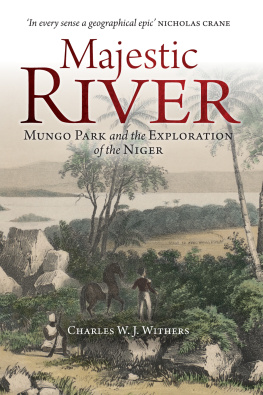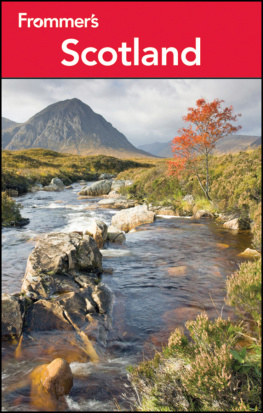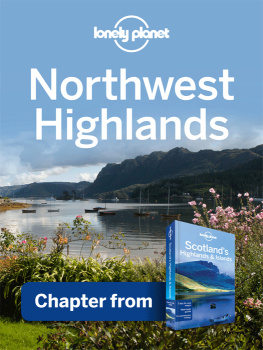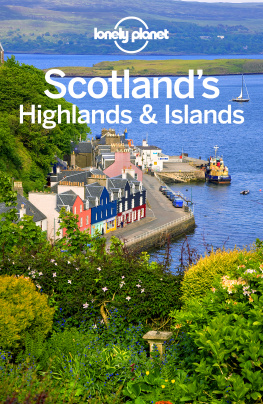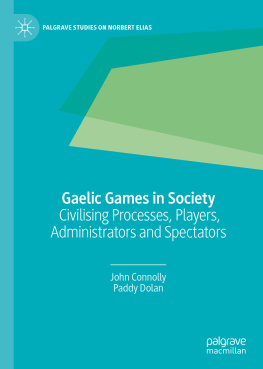ROUTLEDGE LIBRARY EDITIONS: HUMAN GEOGRAPHY
Volume 19
GAELIC SCOTLAND
GAELIC SCOTLAND
The Transformation of a Culture Region
CHARLES W J WITHERS
First published in 1988 by Routledge
This edition first published in 2016
by Routledge
2 Park Square, Milton Park, Abingdon, Oxon OX14 4RN
and by Routledge
711 Third Avenue, New York, NY 10017
Routledge is an imprint of the Taylor & Francis Group, an informa business
1988 Charles W J Withers
All rights reserved. No part of this book may be reprinted or reproduced or utilised in any form or by any electronic, mechanical, or other means, now known or hereafter invented, including photocopying and recording, or in any information storage or retrieval system, without permission in writing from the publishers.
Trademark notice: Product or corporate names may be trademarks or registered trademarks, and are used only for identification and explanation without intent to infringe.
British Library Cataloguing in Publication Data
A catalogue record for this book is available from the British Library
ISBN: 978-1-138-95340-6 (Set)
ISBN: 978-1-315-65887-2 (Set) (ebk)
ISBN: 978-1-138-96303-0 (Volume 19) (hbk)
ISBN: 978-1-315-65902-2 (Volume 19) (ebk)
Publishers Note
The publisher has gone to great lengths to ensure the quality of this reprint but points out that some imperfections in the original copies may be apparent.
Disclaimer
The publisher has made every effort to trace copyright holders and would welcome correspondence from those they have been unable to trace.
GAELIC SCOTLAND
The Transformation of a Culture Region
Charles W J Withers
First Published in 1988 by
Routledge
11 New Fetter Lane, London EC4P 4EE
Published in the USA by
Routledge
in association with Routledge, Chapman & Hall, Inc.
29 West 35th Street, New York, NY 10001
1988 Charles W J Withers
Printed and bound in Great Britain by Mackays of Chatham PLC, Chatham, Kent
All rights reserved. No part of this book may be reprinted or reproduced or utilized in any form or by any electronic, mechanical, or other means, now known or hereafter invented, including photocopying and recording, or in any information storage or retrieval system, without permission in writing from the publishers.
British Library Cataloguing in Publication Data
Withers, Charles W.J.
Gaelic Scotland: the transformation of a culture region: (historical geography series).
1. Highlands (Scotland) Civilization I. Title
941.15 DA880.H7
ISBN 0-415-00459-4
Library of Congress Cataloging-in-Publication Data
ISBN 0-415-00459-4
CONTENTS
This book is an essay in cultural and regional historical geography. It explores the cultural transformation of the Highlands of Scotland, the Gaidhealtchad , or Gaelic Scotland. It is written both from a feeling that a cultural perspective upon geographical change has been neglected in writings on the Highlands and in the hope that it will stimulate interest from all those involved in questions of regional identity and transformation. The main period covered is from 1609 the Statutes of Iona to the 1886 Crofters Act and the Highland Land Wars of the late nineteenth and early twentieth centuries although consideration of several events and processes earlier and later has meant that discussion has ranged beyond and before these dates. But no all-embracing historical-cultural geography or cultural history of the Highlands has been attempted. Rather, in drawing upon some of the concerns of cultural geography, from a wide range of source material, and a notion of culture from Marxist cultural theory, I have sought to put an understanding of the cultural transformation of the Highlands on a more equal footing with other explanations of change. The transformation of the title refers not to questions of physical landscape change (though elements of landscape change in this sense are discussed), but rather to the making of the people of the region and to their transformation as a socially-constituted process or set of processes which took a certain expression over a given period of time.
The Highlands did not exist as a cultural region within Scotland until the late 1300s. Distinct in language Gaelic and in the prevalence of a clan-based social system, largely separate from the rest of Scotland in terms of agricultural economy and without a base in manufactures, the Highlands remained distant and to an extent unknown until the seventeenth and eighteenth centuries. From that period, they were discovered and subject to agrarian change, industrial development, religious unification, anglicisation through education, and to a whole suite of policies of improvement geared toward the transformation of Highland society and culture. Improvement and transformation are not just material things however. They involve questions of attitude and ideology, of changes not just in language as a given attribute and in established material practices but also questions of regional identity, of consciousness. I have tried to show here how the transformation of the Highlands as a culture region has been effected intellectually and ideologically as well as materially and to show how the effects of this combined ideological and material transformation varied by class within Highland society, by place and district within the region as a whole, and over time. In so doing I have tried to understand and explain the views and values of those people experiencing the transformation to consider their needs and capacities as well as documenting the concerns and intent of those directing and initiating the processes of transformation. This concern itself stems from a feeling that explanations of social and cultural change in the Highlands have too often been couched in terms of an immutable progression from clan to class, from Gaelic to English, from traditional to modern a transformation without either opposition or internal contradiction. Understanding the historic Highlands has also been hindered by being too commonly represented in terms of Highlands versus Lowlands with change coming only from outside and above with little thought given to differences of class, of mental outlook or other distinctions within the Highlands. These criticisms are not true of all writing on the Highlands Dodgshon, Hunter, and Richards stand as notable exceptions but they are relevant to much that has been written about the region and its people. In considering these and other issues in what follows, questions of that varying historiography that has attached itself to the Highlands will be seen to be no less important than the actual transformation of the region.
This book owes much to many people for their advice, guidance, and patience. I have reviewed and discussed the work of a large number of people here but I am particularly indebted to Malcolm Gray, James Hunter, Annette Smith, Bob Dodgshon, Eric Richards, Anand Chitnis, and David Stevenson for allowing me to draw upon their work in the way I have. Several people have commented on earlier drafts of various chapters and have discussed with me the intriguing problems of Highland historical geography I should like to thank Ronald Black, John Christie, David Daiches, Nick Fisher, Mike Heffernan, Lindsay Hewitt, Jean Jones, Peter Jones, Peter OBrien, Susan OBrien, John MacInnes, Rudiger Schreyer, and Rick Sher for their help in this way. I am particularly grateful to Bob Dodgshon and William Gillies for their scholarship and critical advice freely and warmly given, and to Robin Butlin I owe special thanks for his perceptive comments and patience as Series Editor. I acknowledge with thanks the permission granted from the Syndics of Cambridge University Press to reproduce data published in M.Flinn (ed.), Scottish Population History from the 17th Century to the 1930s , especially from Tables 5.3.1; 5.4.1; and 5.5.5 reproduced in part here as have been presented in seminars at Loughborough University, Edinburgh University, Aberdeen University, and All Souls, Oxford, and I should like to record my thanks to the respective audiences. I am especially indebted to the librarians, archivists, and staff of those libraries and record offices I have worked in: the Universities of Aberdeen, Edinburgh, Dundee, Glasgow, and Oxford; the Sandeman Library, Perth; the City Archives and Local History Library, Dundee; Central Region and Grampian Region Record Offices; Strathclyde Regional Archives; the City Library and City Archives, Edinburgh; the National Library of Scotland; and, chiefly, the Scottish Record Office, Edinburgh. I am grateful to the Keeper of the Records and to the Registrar General of Scotland for permission to use and quote from documents in their care. Financial assistance has come from the British Academy, the Nuffield Foundation, the Institute of Historical Research and the College of St. Paul and St. Mary. Sheila Taylor, Erica Breuning, Mary Lailey, and Gill Hunt have all turned rough drafts of maps and text into finished copy with cheerful professionalism. Peter Sowden of Croom Helm has been tolerant and a source of much good advice. But perhaps chiefly I am grateful to my wife Anne for her support and patience and to my children who helped keep things in perspective: to them, with love, this work is dedicated.





